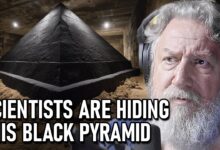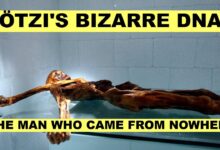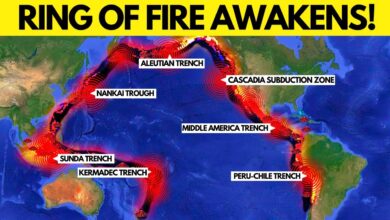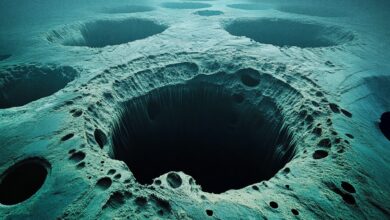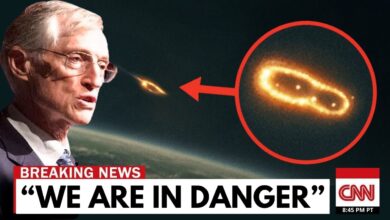James Webb Telescope’s Latest Pictures ARE NOT WHAT WE’RE BEING TOLD
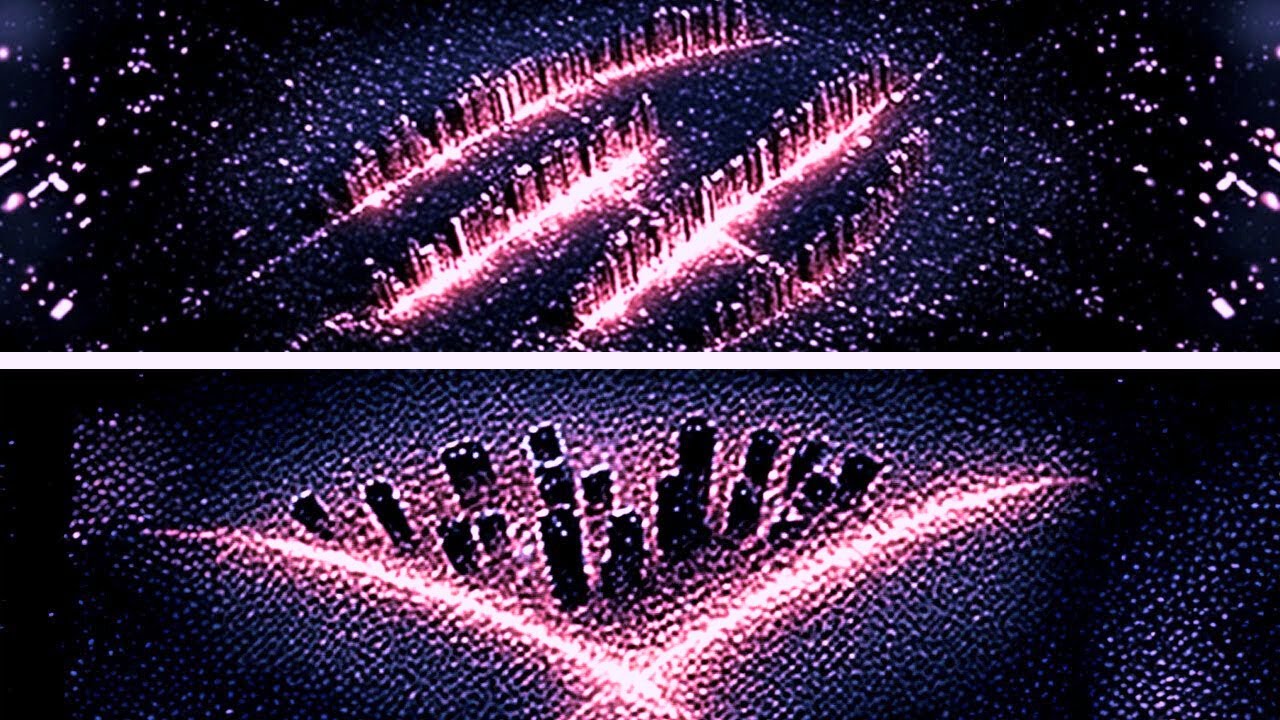
Over a million miles from Earth, an eye unlike any other peers silently into the abyss: the James Webb Space Telescope. Hailed as humanity’s most powerful tool for exploring the universe, it has returned images so breathtaking, so precise, and so revealing that they threaten to rewrite everything we thought we knew about the cosmos.
But here’s what no one is talking about: not everything Webb sees is being shown to the public. Some of its most unsettling discoveries are buried deep in technical papers—or quietly left out of press briefings. And as you’re about to see, its latest images—supposedly just snapshots of galaxies, stars, and nebulae—may contain something far stranger. Something structured. Something deliberate.
Because hidden within their beauty, something doesn’t add up. Something looks… designed.
If that’s true, then what is the universe trying to show us? And why are scientists so reluctant to explain it?
In September, Webb captured what at first seemed like a playful cosmic coincidence: two colliding galaxies, cataloged as ARP 107, forming what looked eerily like a smiling face. To the untrained eye, it was amusing. But to astronomers, it was disturbing. Why? Because the symmetry, the alignment, and especially the luminous bridge of stars connecting the galaxies weren’t just poetic. They were unnatural.
These galaxies weren’t behaving chaotically as they should in a collision. The spiral and elliptical galaxies involved somehow maintained structure in ways that defied gravitational models. Even stranger, the spiral arms had nearly vanished while their cores remained untouched—something that should be impossible in galactic mergers.
At the center of ARP 107 sits an active galaxy powered by a supermassive black hole emitting far more energy than expected. Webb’s infrared cameras didn’t reveal chaos—they revealed balance, almost precision, as though the galaxies were moving in perfect choreography.
And so one question kept surfacing: What if this wasn’t just a collision? What if it was a demonstration?
Earlier in the year, Webb turned its gaze toward N79, a stellar nursery in the Large Magellanic Cloud. On paper, it was just another star-forming region. But then the images came in.
The nebula’s central light source blazed so intensely it distorted Webb’s optics, casting an hourglass-shaped shadow from jets of gas emitted by a newborn star. Yet those jets were not random. They were aligned, flowing in unison across the entire region—an eerie synchronicity that suggested a single, unified momentum.
Scientists called it “cosmic memory,” the leftover spin of the original gas cloud. But another, far more unsettling question arose: What if it wasn’t memory at all?
What if it was a signal?
For such precision to persist across such a vast region, some unseen influence—perhaps even geometric in nature—must be at work. The deeper Webb looks, the less it finds chaos. Instead, it finds patterns. And patterns demand an answer: Who, or what, is doing the arranging?
Then there’s WP39B, a tidally locked gas giant 700 light-years from Earth. When Webb studied it, the data it returned was not merely strange—it was mathematically perfect.
The twilight zone where day turns to night exhibited an even, consistent temperature gradient that defied atmospheric models. The clouds followed an equally ordered rhythm: dense and heavy on the sunrise side, yet almost completely clear on the sunset side—as if something was resetting the atmosphere in perfect synchronization.
Even the wind patterns appeared engineered, transferring heat across the planet with impossible efficiency.
Webb’s findings were clear: nature, when viewed at this scale, doesn’t behave like a storm. It behaves like a system. And systems have structure, logic, and purpose.
In July, Webb captured what may be its most haunting image yet: a glowing red question mark floating in a star-forming region.
To most viewers, it was a cosmic joke. But scientists weren’t laughing.
The symbol, located in the Herbig-Haro 46/47 complex, was too perfect to dismiss. Theories poured in—merging galaxies, gravitational lensing, overlapping stars—but none explained the precision.
Even more troubling was its location: among the earliest galaxies ever discovered, just 400–600 million years after the Big Bang. Here, gas streams appeared to be sculpted not just by gravity but by jets of radiation from central black holes—jets forming lines, arcs, and filaments as if painting across the canvas of early space.
And now, Webb’s highest-resolution images suggest these alignments are not random. In multiple systems, black hole jets seem to run parallel.
If true, the question mark isn’t a symbol of confusion. It’s a symbol of intention.
And the real question is no longer what is it? The question is: why is it there?
When Webb looked back into the “cosmic dawn,” it didn’t just rewrite our textbooks—it shattered them.
Galaxies appearing just 400–600 million years after the Big Bang should have been chaotic clumps of gas. Instead, Webb revealed massive, mature galaxies with rotational symmetry, dense star populations, and clear signs of structure.
By every model we have, these galaxies shouldn’t exist. They are too big. Too organized. Too evolved.
At first, scientists assumed it was an error. But the more Webb found, the clearer it became: our timeline is wrong.
Either the Big Bang happened much earlier than we thought—or galaxy formation doesn’t follow the rules we’ve believed for nearly a century.
And if these galaxies truly are as mature as they appear, then something—or someone—started shaping the universe long before we were ever meant to notice.
Even closer to home, Webb is finding mysteries we never imagined.
Brown dwarfs, once dismissed as “failed stars,” now appear far stranger. In a nearby pair, WISE 1049A and WISE 1049B, Webb detected storms of vaporized sand and turbulent atmospheres. But most shocking of all were their light curves. They weren’t random. They pulsed—like heartbeats.
Meanwhile, Neptune, our forgotten giant, revealed its delicate rings in dazzling detail. But Webb also discovered something else: its moon Triton.
Triton shines like a beacon, reflecting more sunlight than any object in the solar system. And beneath its frozen nitrogen shell, there may be an ocean—an ocean warmed by forces we don’t fully understand.
But here’s the strangest part: Triton orbits Neptune backward, suggesting it wasn’t born there. It was captured—from the Kuiper Belt, or maybe even farther out.
If that’s true, then Triton may not just be a moon. It may be a relic. A message preserved in ice, daring us to look deeper.
All of this leads to one extraordinary possibility.
The answers we’re looking for may not lie in alien ships or radio signals. They may be hidden in the very fabric of the universe itself: in its shapes, its alignments, its strange and repeating patterns.
Scientists call it pareidolia—the human brain’s tendency to see meaning where there is none. But Webb isn’t human. It doesn’t hallucinate. Its instruments read the universe as it is. And still, it finds order.
Maybe these patterns aren’t coincidence. Maybe they’re language.
For decades, we’ve searched the sky, sending golden records, listening for signals, hoping for contact. But what if the universe has been speaking all along—not in sound, but in structure? Not in noise, but in geometry?
Because what Webb is showing us isn’t chaos. It’s choreography. A cosmic dance where galaxies spin, black holes sculpt, and nebulae leave their signatures on the stars.
Every image isn’t just a picture. It’s a sentence.
And maybe—finally—we’re beginning to learn how to read.
If that’s true, then the most beautiful, terrifying truth of all is this: We were never alone. We just weren’t ready to understand what was in front of us.
Do you believe the universe is trying to tell us something? If this made you question what’s real—and what’s being hidden—leave a comment. Like this video if you think James Webb is seeing more than stars. And subscribe—because next time, we’ll explore the Webb discovery NASA refused to release.


